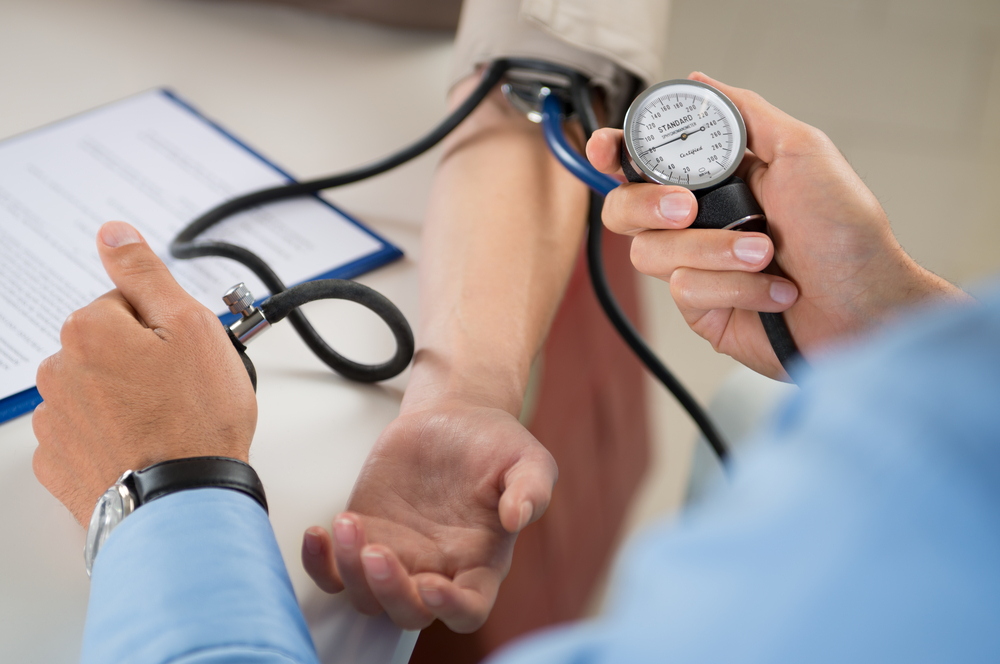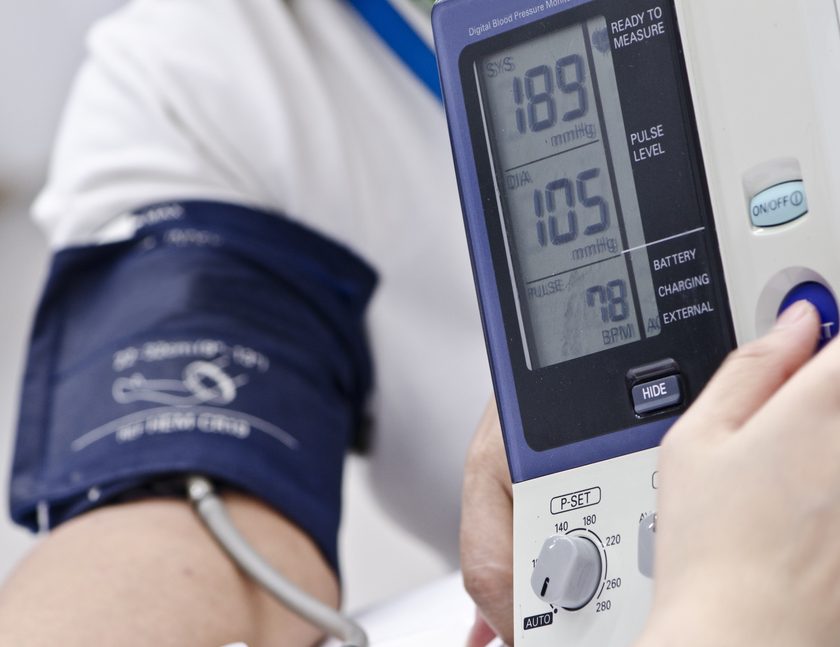
Blood Pressure Readings at the Doctor’s Appointment: What do they really mean?

If you’ve ever been to a doctor’s appointment, it sometimes gets confusing to figure out all that’s taking place. One of the most confusing moments is when the doc measures your blood pressure. All you see is the doc strapping a pressure cuff on your arm.
Then he or she takes a couple of squeezes before jotting down the numbers on their notebook. Which begs the question; what do those numbers actually mean? It’s your lucky day because you’ll be finding out what those numbers actually mean, and how they mirror the current lifestyle that you’re living. So let’s dig in!

Rido/Shutterstock
One of the norms of just about every doctor’s appointment is to have your blood pressure checked. However, most people have no idea what those readings indicate and have to rely heavily on the doctor’s approval that their blood pressure is fine.
Hold on, what is blood pressure first?
In Lehman terms, blood pressure refers to the strength and speed with which blood is being pumped throughout the body. At the center of all of this is the heart. As it pumps oxygen in the blood to various organs of the body, it does so at a specific pressure, which can be determined by the way blood will push up against the arteries and blood vessels.
In fact, this is how your doctor is able to determine your heartbeat by simply holding one of their fingers up against your arteries.

Shine Nucha/Shutterstock
Knowing your blood pressure is vital as it helps you take the right steps to ensure that you live a healthy lifestyle. If it is a little over the top, you can take subsequent measures in your diet and ensure that you are eating the right food
That being said, having a strong heartbeat doesn’t necessarily translate to being a ‘healthy’ individual. As a matter of fact, Dr, Susan Besser of the Mercy Personal Physicians located in Baltimore recommends that blood pressure should ideally have a gentle flow.
What the blood pressure numbers translate to
You’ve probably heard your doctor at one point in time reading two numbers using the phrase, ‘this over that’ etc. Have you ever known what those numbers are?
In fact, the number on top refers to your systolic blood pressure; that is, the pressure of blood being pumped from the aorta to your body organs.
On the other hand, the number at the bottom is referred to as the blood recorded after every push; that is, the point at which the heart, as well as the blood vessels, are in a relaxed state as blood enters the heart. In short, this is called the return flow.
According to the American Heart Association, the recommended blood pressure reading for a healthy human being is 120/80 or lower. In fact, the Association recently lowered the number in the hopes that people with slightly higher readings would immediately seek medical attention in order to get their hypertension treated early.
So if you happen to have a reading that is around 120-129 on the systolic end, then it’s safe to say that you have high blood pressure. If it surpasses the 130 mark, then you have hypertension.
So why is high blood pressure so dangerous?
Over time, high blood pressure can cause significant damage to the veins and arteries, resulting in a stroke. Additionally, they can result in other heart-related issues that can arise in the process.
Hence, if you have an abnormally high reading such as 160/110, then you might need to receive medication right away.
That being said, it is highly recommended that you regularly get your blood pressure checked to ensure that it remains within an acceptable range for optimum health.
More in Health & Well-being
-
`
Why Adults With ADHD Are 3x More Likely to Develop Dementia
We have all heard of ADHD, haven’t we? Hyper kids, distractions galore, restless minds – these are images we often associate...
December 11, 2023 -
`
Signs of Emotional Connection in Relationships
Building a strong connection with someone isn’t just about being in sync or sharing hobbies—it’s about that deeper bond, where you...
December 4, 2023 -
`
Hollywood’s Shortest Marriages: Britney Spears, Carmen Electra & More!
In the glitzy world of Hollywood, where fairy tales often unfold on the silver screen, there exists a flip side—a realm...
December 3, 2023 -
`
The Surprising Benefits of Unplugging
In today’s hyper-connected world, where we are constantly bombarded with notifications, messages, and the allure of social media, disconnecting may seem...
November 26, 2023 -
`
How “Looking Your Best” Improves Our Wellbeing
Most of us have had moments standing in front of our closet, deciding on an outfit for the day. And we...
November 15, 2023 -
`
Therapy? Medication? What Are the Treatments for PTSD
Post-Traumatic Stress Disorder (PTSD) is a common after-effect of traumatic events. It can be a debilitating condition, but the good news...
November 7, 2023 -
`
Meet the Woman Who ALMOST Married Barack Obama
Barack Obama’s life has been a captivating narrative, often told and retold, with each revelation adding layers of intrigue to his...
November 5, 2023 -
`
The Rise of Caviar Bumps, Thanks to Gen Z
In an intriguing twist of culinary culture, millennials and Gen Zers are drawn to an unusual indulgence – fish eggs, or...
October 28, 2023 -
`
Everything You Need to Know About Acid Reflux, Heartburn and GERD
Ever had that burning-in-the-chest sensation after a meal? Or perhaps you have lain awake at night with an odd sour taste...
October 17, 2023















You must be logged in to post a comment Login